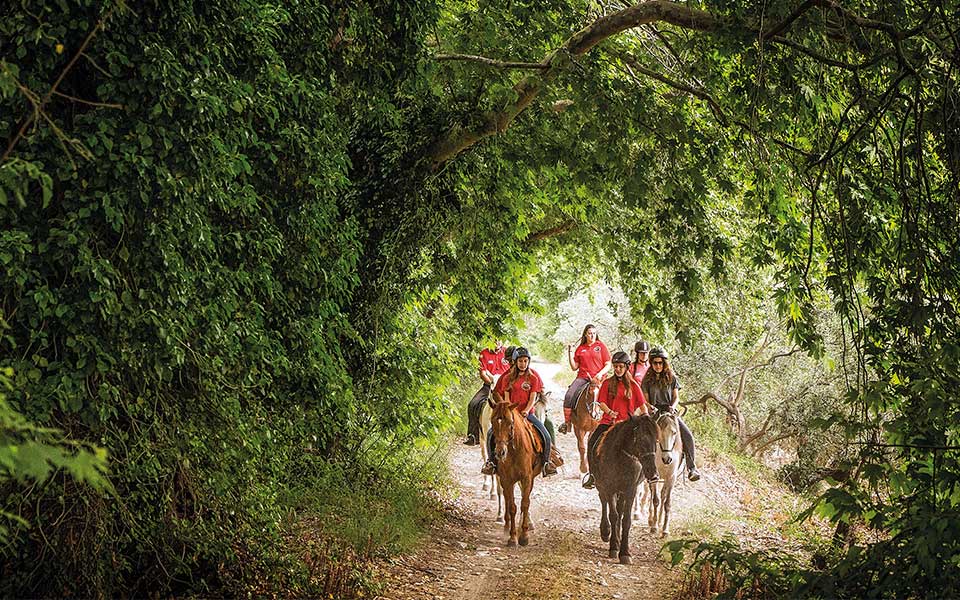In recent years, numerous initiatives and concerted efforts to preserve and foster Greece’s exceptional natural environment have made it increasingly welcoming to visitors.
The most striking feature of the country’s natural heritage is its diversity, a magical combination of mountains and sea. Imagine yourself on Mt Olympus, standing on the Plateau of the Muses at an elevation of 2,550 m. Precipices and steep slopes surround you. To the west are the peaks of Stefani (2,909 m) and Mytikas, the highest in Greece (2,919 m). Lower down, dense clouds shroud forests, deep gorges, sheer cliffs and alpine landscapes. Through a small gap in the peaks, your gaze extends as far as the sea. Here visitors find natural settings virtually untouched by tourism development.
Until fairly recently, such natural environments, with the exception of the sea, did not hold much attraction for the majority of Greeks, but lately they have begun to discover their wonders. For local inhabitants of more remote areas, too, outlooks are changing; just a few decades ago, harsh winters and other difficult conditions meant residents felt they had no choice but to leave their villages. It seemed that the topography of the land itself was hostile. Then something changed; improvements in infrastructure and roads, advances in technology and the development of nature tourism made whole areas viable again.
In the not-too-distant past, no one could have imagined, for instance, that the jagged peaks on the island of Kalymnos, the “curse of the island” as they were called by the locals because they were useless for cultivation and livestock grazing, would, in the space of just a few years, become a top destination for international rock-climbers. Nobody could have predicted that, in the mountains of Crete where herds of livestock could graze only in summer, a handful of “crazy” enthusiasts would begin promoting the sport of ski mountaineering. Nor could people have imagined that the rushing rivers of Epirus, which once made entire areas inaccessible, would today be attracting rafting enthusiasts from all over the world.
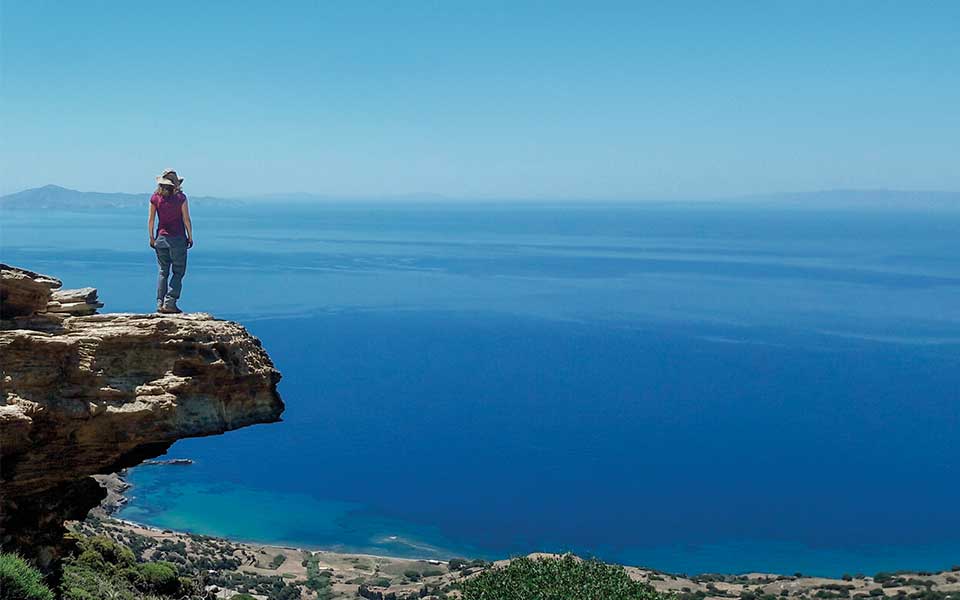
For years, the rocky peaks and plateaus of Greece were home to hermits and shepherds only. When the first mountaineering schools opened in the Alps, mountain sports and activities were unknown in Greece.
“The first organized expeditions and ascents in the country were introduced by clubs in the late 1920s,” says Themistoklis Mystriotis, general secretary of the Greek Mountaineering Association of Athens, the country’s oldest mountaineering club, established in 1928. “These expeditions included climbing, hiking and winter mountain activities, with only a handful of participants.”
Although interest did gradually increase, it was not until the 1980s that several pioneers introduced organized tourism around such activities to Greece. Among these trailblazers were Michael Tsoukias and Christos Lambris, founders of Trekking Hellas, now the country’s biggest outdoor pursuit company. “The first river descents began on a trial basis in 1989 with an inflatable boat on the Nestos and a river raft on the Acheloos,” Tsoukias recalls. Today, Trekking Hellas has a network of 13 franchise companies, which, along with a large number of other enterprises and individual professionals, are putting many little-known areas firmly on the tourist map.
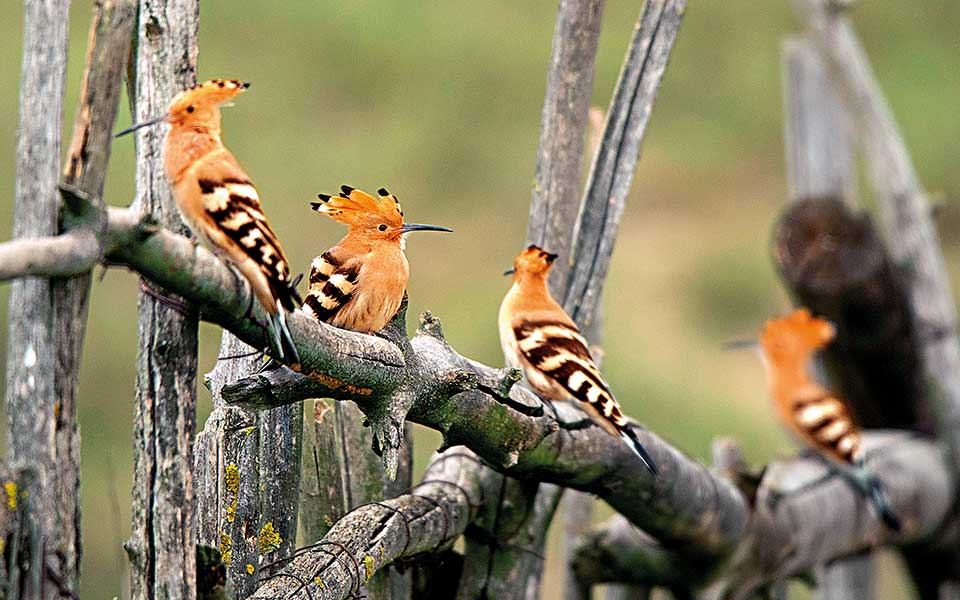
© Visual Hellas
Thrace: birdwatcher’s paradise
Black and Egyptian vultures circle high in the sky, as griffon vultures with wingspans of nearly three meters squabble for dominance on the ground. You’ll see this and more in the greater Evros area, home to the Dadia-Lefkimi-Soufli Forest National Park, one of the few remaining refuges for rare birds of prey in Europe, criss-crossed by fascinating hiking trails.
Further south, in the Evros Delta, you’ll spot many other species of birds. In an eerie landscape of flat expanses, marshes and sandbanks, you can enjoy guided boat tours organized by the wetlands’ management body, as well as bus and hiking tours (evros-delta.gr). On the Nestos River in the regional unit of Xanthi, the most popular activities are canoeing, kayaking and rafting (riverland.gr, gonestos.gr).
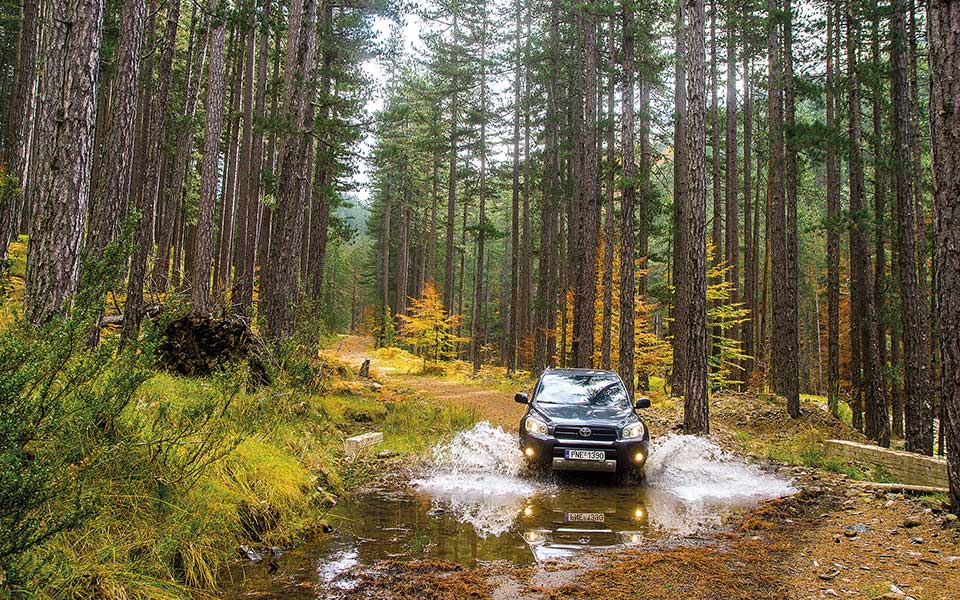
© Clairy Moustafellou
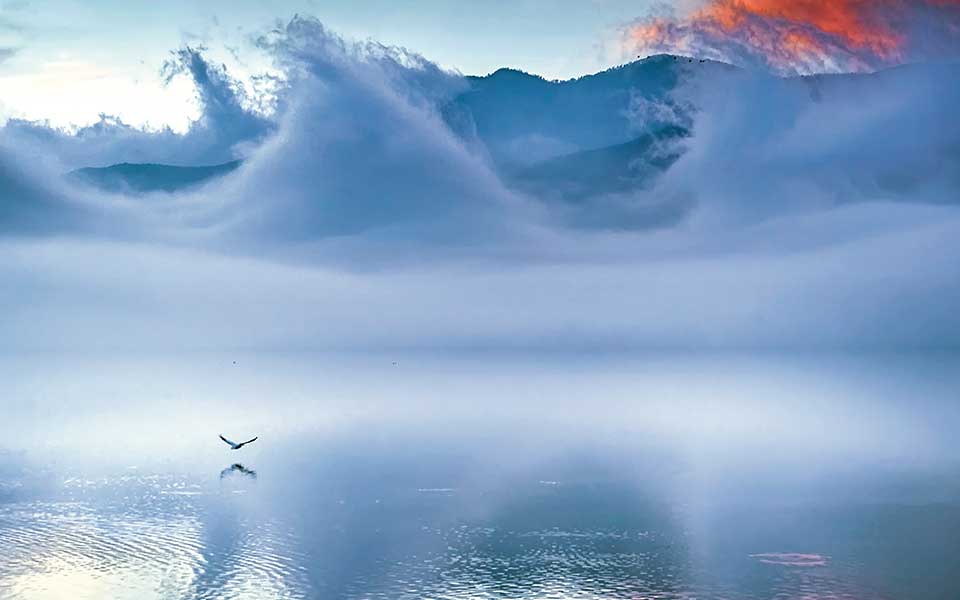
© Perikles Merakos
Macedonia: Serene lakes, dense forests
Macedonia is home to a number of stunningly beautiful lakes in serene landscapes. Lake Kerkini has become an attractive ecotourism destination thanks in no small part to Ioannis Reklos and the tourism company Oikoperiigitis. The lake has a fine reputation for birdwatching, with a rare colony of Dalmatian pelicans often stealing the show.
The same is true of tiny Lake Zazari, which very few people would know about if it were not for Takis Voglidis, whose outdoor activity company Artemis (artemisoe.gr) offers canoeing and horseback riding. Vegoritida is one of the largest lakes in Greece and is popular with windsurfers, while the Prespa lakes are special on account of their unique ecosystem, now protected as part of a national woodland park. Here you can enjoy hiking, road trips and boat excursions in the border region with Albania and North Macedonia (Nikos Traianopoulos, Tel. (+30) 694.615.0074).
Nearby is the Vigla-Pisoderi Ski Center, one of the most beautiful in the country, while further south lies the Vasilitsa Ski Resort, renowned among snowboarders. Also located in the regional unit of Grevena is Valia Calda, an area with dense forests and rare flora and fauna that is definitely worth discovering on guided hikes (Overland, Tel. (+30) 24620.850.32).
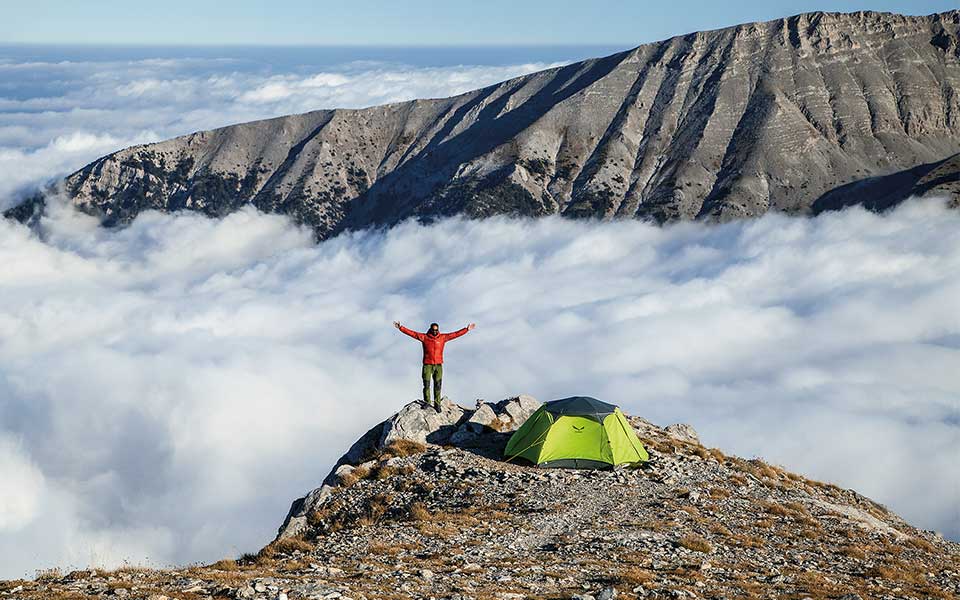
© Olga Charami
Thessaly: From the highest mountain to the sea
Mt Olympus, straddling the border between Macedonia and Thessaly, is, in addition to being the home of the gods in Greek mythology, the country’s highest mountain, its first national park and a UNESCO biosphere reserve, offering a choice of mountaineering and climbing routes.
The first ascent came in the early 20th century, while the first refuge, Spilios Agapitos was founded in 1930 but was significantly improved in the 1960s by its then manager, Kostas Zolotas. It was largely thanks to his efforts, and those of his German wife, that the refuge became popular among foreign visitors, too. For mountaineering, you can find the Styllas brothers at the Christos Kakalos Refuge, while the mountain guide Lazaros Botelis operates out of the Giosos Apostolidis refuge.
To the southwest, the extraordinary rock columns of Meteora create an almost unearthly landscape. Composed of a mixture of sandstone and conglomerate, these enormous natural pillars rising precipitously from the plain were first climbed by hermit monks in the 10th century. Two German climbers began establishing rock-climbing routes in the 1970s; since then, locals and visitors alike have turned the rare geological phenomenon into a top climbing destination, with more than 700 routes.
Further south, Lake Plastiras offers a range of outdoor activities, including hydrobiking. The lake’s calm waters, free of hidden hazards, made it ideal for tourism development, and among the first to see this was Dimitris Charalampidis and his company Tavropos, which also offers canoeing, archery, mountain biking and other activities.
Memorable hikes and horseback riding adventures await the visitor to verdant Pilio, a mountain region with dense forests washed by the sea. For horseback riding, contact Milies Equestrian Club; for hiking, the aptly named Hike Away in Pelion (Tel. (+30) 2426.049.724).
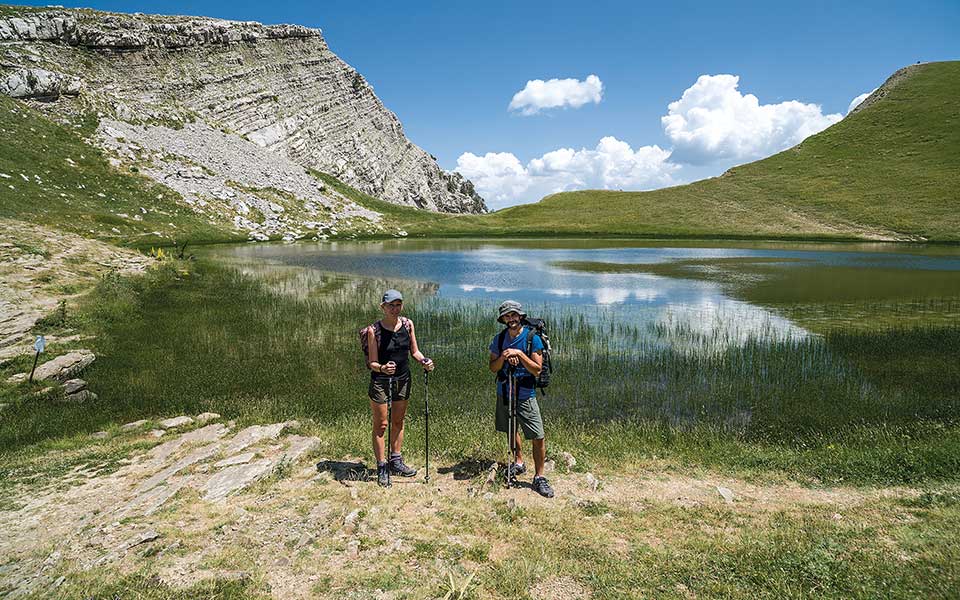
© Apostolos Mantzouranis/Trekking Hellas
Epirus and Central Greece: Nature at its finest
In the 1970s, a German professor paddled his way down the Aoos River in a kayak before the astonished eyes of the townsfolk of Konitsa. A few years later, he donated three of his kayaks to the local municipality. In 1994, a local resident who had become a skilled river kayaker, Nikos Kyritsis, founded the outdoor activity company No Limits (Tel. (+30) 694.475.1418), which significantly raised the profile of a place that – before then – had not been known for tourism.
The Epirus region is blessed with some of the richest natural areas of Greece, including the spectacular Vikos Gorge, one of the deepest in the world (1200m), sections of which can be explored on hiking trails. There is also the smaller Vikaki Gorge; numerous ravines that are ideal for canyoning; and two rivers, the Voidomatis (one of the cleanest in Europe) and the Aoos, both of which are great for rafting.
Epirus is also home to majestic Mt Tymfi, with dozens of peaks above 2000m for hiking and climbing, where you will find Drakolimni, one of several alpine lakes in the Pindus mountain range, located at an elevation of 2050m. This breathtaking landscape forms the core of the Vikos-Aoos National Park and is one of the UNESCO Global Geoparks.
In the south of Epirus lies the Ambracian Gulf, a national park boasting the country’s largest contiguous wetland that is also one of the most important wintering grounds for shorebirds and waterfowl. In addition to 20 lagoons separated by narrow strips of land, the gulf features numerous marshes, water meadows and reed beds, all of which you can discover while doing some birdwatching, thanks to the efforts of the enterprising Amvrakikos Wetlands Management Body.
Heading east into Central Greece, you can explore the tall mountains of Oiti, Giona and Parnassos, which are criss-crossed by dozens of hiking, climbing and mountaineering routes. On Parnassos, you’ll find one of the most popular ski centers in Greece, while nearby, in the magical landscape of Delphi, there’s a growing network of relatively easy but extremely interesting hiking trails.
The regional unit of Evrytania, too, has many impressive mountains and deep gorges such as Panta Vrechi, which offers an outstanding river trekking experience.
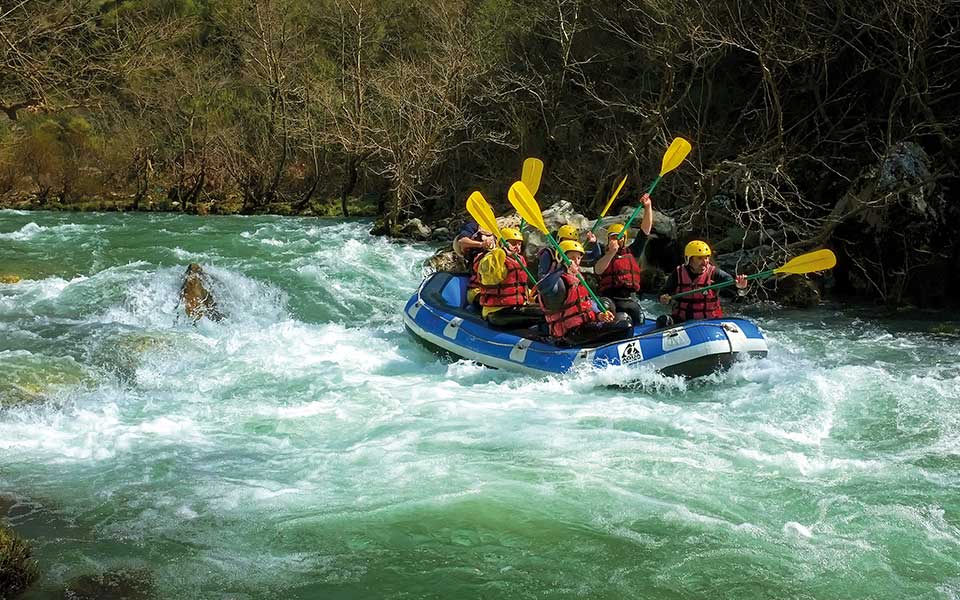
© Perikles Merakos
the Peloponnese: reaching new heights
A wonderful story is being written in Arcadia: in 2015, a group of local volunteers undertook to open up the Menalon Trail, the first footpath in Greece to be certified by the European Ramblers’ Association. The trail has a total length of 75km and crosses mountains, forests and rivers. Most people take five days to complete it, with overnight stays in a different village each night. But it is not the only success story in these parts. Near the coast of Arcadia, at Leonidio, the celebrated 250m high limestone face known as the Kokkinovrachos (“Red Rock”) and its surrounding cliffs have, in recent years, become a very popular climbing destination, with over 800 routes.
Visitors to Mt Helmos, in the northern Peloponnese, are attracted by hiking trails, the ski center and the Vouraikos Gorge, which you can hike through or view from the carriage of a delightful cog railway train. The gorge, the cold springs of the Aroanios River, Mt Helmos and the crystal-clear mountain lakes of Tsivlou and Doxa together comprise a UNESCO Global Geopark.
The highest mountain in the Peloponnese is Taygetus, which has hundreds of trails. The most famous leads to the peak (2407m), but you can also traverse several impressive gorges, including those of Viros and Rintomo, led by the experienced guides of 2407m Mountain Activities and Climb Up.
In the west, towards Messinia, the sea takes center stage. A coastline that alternates between long sandy beaches and jagged convoluted stretches, together with a fascinating seabed, means visitors can choose from a range of water sports, including diving and kayaking.
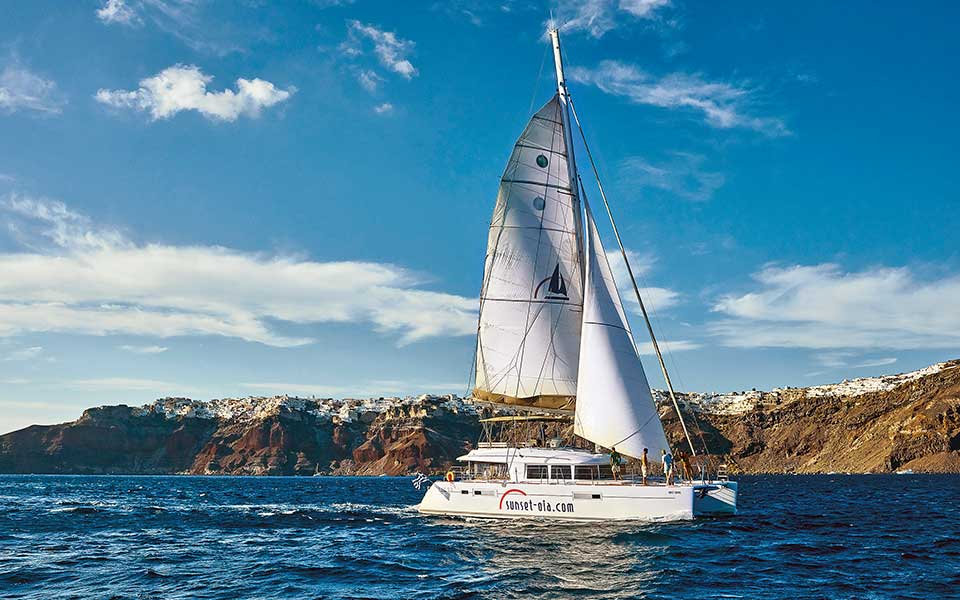
aegean and ionian Islands: out on the water
Nature and sports tourism have, in recent years, been growing in importance on islands long associated with a more conventional approach to sun, sea and fun. Sea kayaking has become increasingly popular on Milos (seakayakgreece.com) and Kefalonia (outdoorkefalonia.com); Santorini offers memorable sailing trips in its unique caldera (sunset-oia.com); Lefkada, Naxos and Rhodes have deserved reputations for wind and kite surfing off some amazing beaches; numerous impressive shipwrecks have made Leros a great diving destination (hydrovius.gr); while Alonissos and Zakynthos both feature national marine parks (alonissos-park.gr, nmp-zak.org) waiting to be explored.
If you’re interested in chartering a catamaran or yacht for sailing adventures, Istion Yachting has nearly 40 years of experience in the business. In the beautiful interior of Chios, you can find out more about the island’s most precious product, mastic, by participating in activities related to its cultivation, or explore the island’s natural splendor on cycling or hiking tours organized by Masticulture Ecotourism Activities, the island’s alternative tourism specialist.
The island of Kalymnos has established itself as one of the top sport climbing destinations in the world. The quality of the rock, the climate and the landscape first attracted a handful of Italians in 1996, who went on to open 43 sport routes. Their work was carried on by celebrated climber Aris Theodoropoulos, whose dedication and passion have been instrumental in making Kalymnos a climber’s paradise. Between 10,000 and 15,000 visitors arrive each year from all over the world to climb some of the 3,000 routes found across 65 crags.
While each island has its own charm, the main trend in recent years has been the creation of networks of routes for hiking and mountain running. Andros (androsroutes.gr), has an impressive network of over 300 km of paths, with 180km of hiking routes restored and signposted, including a 100-km continuous walking route certified to European Ramblers’ Association standards; likewise, Tinos boasts 150km of routes (tinostrails.gr).
And these are only two examples. From Kythira to Samos and tiny Donousa, these trails are changing the “map” of the Aegean and the habits of its visitors.
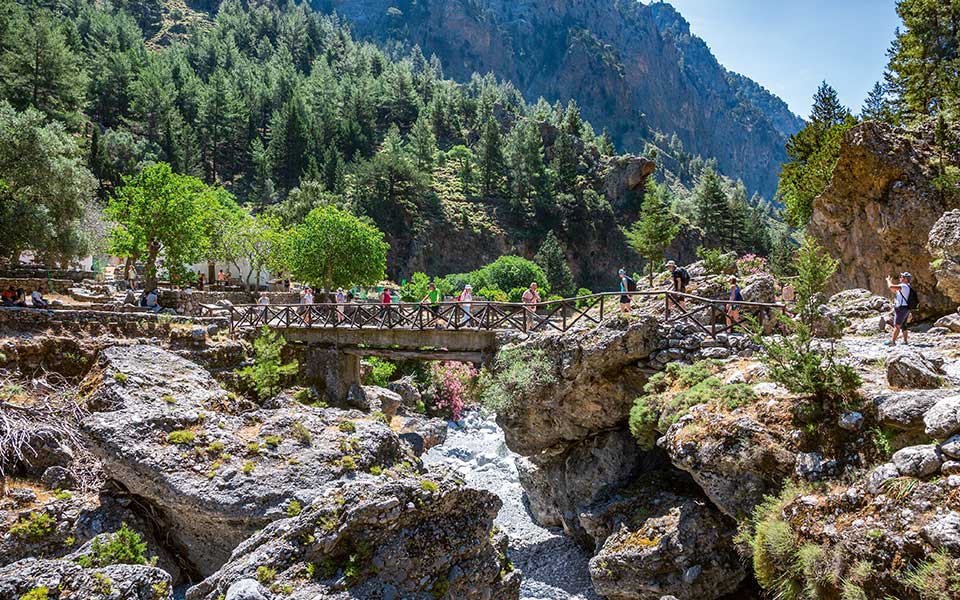
© Nikolas Economou
Crete: on the big island
Every region of Crete boasts a main mountain range with soaring peaks and deep gorges, many of which open onto exotic, secluded beaches washed by crystal-clear waters. On the plains, centuries-old paths traverse forests and connect villages. One of the best-known hiking routes is the E4 European long-distance path, which runs for 320km from Kissamos in Hania to Kato Zakros in Lasithi.
The best-known gorge is Samaria, in the Lefka Ori National Park, while the island’s highest peak, at 2456m, is Psiloritis (a UNESCO Global Geopark) in the island’s center. On Crete’s countless beaches you can enjoy every kind of water sport, while the interior of the island offers a host of other outdoor activities.
Often described as a microcosm of mainland Greece, Crete is a place where you can go mountain skiing in the morning and look down at the stretch of sea where you’ll be kayaking in the afternoon, parallel to a beach lined with palm trees (cretantrails.ga).

